How Are You Doing? — Joey Berriatua

Revisit Joey's How Are You Doing? Tin Talk from 2020:
Joey talks us through the mental and physical darkness of his battle with injury, and how he ultimately found the light at the end of the tunnel in this installment of the “How Are You Doing? series.
I remember the exact day I originally injured myself. On Friday, April 5, 2019, I was doing a steeplechase-specific workout in preparation for the Payton Jordan Invitational a month later. The workout: 5x800 over hurdles, 5x80m strides, and a two-mile threshold. Cruising through the intervals I could feel my groin, for some inexplicable reason, start to give out more with every hurdle. Completely ignoring the discomfort, I crushed the half-mile reps. Every hurdle was attacked as if I were a high-hurdler. I was in damn good shape. I ignored every sign to stop. We jogged a couple of minutes after the steeple reps, and I went to take off on my first hard stride. When I pushed off my left leg, what felt like my groin, shot with pain. I hobbled five more steps and stopped in considerable pain. Somewhat concerned, I skipped the strides and tempo, and limped a five minute cool down. Thought I’d play it safe, not push through more.
Too late.
The pain and discomfort got worse and worse leading up to Payton Jordan. But enough Tiger Balm can make any muscle feel good for a workout. Realistically, all signs were pointed towards me taking the weekend off. But my family, friends, and all of my old teammates and coaches would be there, watching me pursue my dream as a professional runner—something totally unprecedented for Santa Clara University distance running. This was my meet. The tightness manifested to a point to where I couldn’t lift my left leg above hurdle height without feeling like the attachment on my groin was going to tear in half. Despite this, I had to race. I thought to myself, “worst case scenario, I drop out if the pain is too much.” You know, be smart and play it safe. I forced my way through the warmup, fully aware of the softball-sized knot on the inside of my left leg. “Fuck, this is really uncomfortable.”
Somehow, I finished that race with a four-second personal best. It was probably the most competitive I’d been in a steeple race, until 400 meters to go. Pure adrenaline got me through that race without pain. It didn’t get me through the cool down; that was when I noticed the first signs of osteitis pubis. It was the strangest feeling, it felt like I was going to fall forward onto my face while I jogged around Stanford’s campus. There was zero stability in my hip flexors. It was an incredibly uncomfortable sensation, I’d never felt anything like it. Something was really wrong.
I did not have enough confidence in my training and talent to take any time off after Payton. The big goal of the year was to qualify for my first USA Outdoor Track & Field Championships that would take place in Des Moines, Iowa in July. There was no chance of qualifying in the 5,000m or the 1,500m—my times just weren’t there. Steeple was my only option. I had to qualify. The workouts, let alone running in general, were borderline unbearable. After weeks of willing myself through 75-95 miles of training, I started losing faith. My doubles were the worst. Usually after closing the running store, around 7 or 8pm, I would slog through 20 to 30 minutes of feeling like I was taking a sledgehammer to my waistline with every step. It was a necessary evil in my head. I needed strength to reach my goal. But the pain and discomfort were getting undeniably worse.
Looking back, there was a lot of insecurity in my need to compete at the US Championships. In my mind, I had not proven myself to my teammates yet. I was not a member of Tinman Elite unless I qualified. I would do anything to make that meet. For the months of May and June, however, that journey didn’t involve racing another steeplechase. Each hurdle would just make everything worse and worse. I was absolutely terrified by the possibility of making this pain and discomfort any worse than it already was, so I avoided the event altogether.
There was a day in June when my teammate, Sam Parsons, snapped. He asked when the next steeple was coming. He and I both knew I wasn’t qualifying for USAs with my season best of 8:48. The standard was 8:40. Putting off his question and addressing my discomfort in my hip flexors and groin, I reassured him the next one was soon. Broken, I went home, called my parents, and cried for about an hour. The idea was terrifying. I couldn’t take this kind of pain anymore. But next week I had made my decision: I would race at the Sunset Tour at Azusa Pacific University in early July. I put my fear and anxiety aside to reach the goal I had set out for myself at the beginning of the season. Going into the weekend, I had one goal: “Fuck it, I have to make USAs. 8:40 or bust.” Before the race, a text from Coach Schwartz popped up on my phone: “If the steeple is going to get you hurt again, don’t be afraid to run a 5k. Don’t worry about qualifying for USAs, managing this injury is more important.” I ignored the text. I told myself that I had to steeple.
It became pretty clear following my race at Sunset Tour that 3,000 meters is just short enough for me to run a steeplechase off of pure adrenaline. The race certainly wasn’t my best showing, but the 8:44 performance would be enough to qualify for USAs two weeks later. The day after Sunset Tour, I ran an “easy” two miles. At 9:45/mile pace. My body physically couldn’t go any faster.
Going into USAs, my confidence was about as high as someone in my situation could be. Qualifying, for me, was something to be happy about. Being the last guy in, there was nothing to lose. But with the way my body had been feeling, it was clear that I would be completely screwed after the race. I was excited to compete, ready to see what I could do, but also checked out, ready for the season to be over, and eager to get healthy again. The second I crossed the finish line in Des Moines, I would take my time off, cross-train a little, and be back running in a couple of months. The only solace going into my race was talking to Coach Schwartz about my race plan. I’ve always found comfort in talking through training and strategy with my coaches, but this was the first time I’d communicated with Coach since his text before Sunset Tour. I’d been avoiding him, like my injury, ashamed that I was doing what I knew I wasn’t supposed to be doing. So, after a stride on the backstretch, and only three minutes before the gun went off, Coach gave me a plan: “Relax the first kilometer, and then start making moves if you can after that,” he told me as he stood against the railing of the stands. But I wasn’t able to do any of that. A disappointing 8 minutes, 53 seconds, with 28 excruciatingly painful hurdles and seven miserable water jumps later—my season was over.
I’d made it through an entire outdoor season by lying. I’d lied to my teammates, my coach, and myself. Every single day, I lied about how I was feeling and the extent of my injury. I felt that I had to. Making it to July wouldn’t have been possible otherwise. My livelihood depended on these lies. If I don’t qualify for the US meet, in my mind, I don’t deserve to be on Tinman Elite. If I don’t qualify, I don’t receive a bonus that would pay my rent for the rest of the year. If I don’t qualify, I can’t afford any treatment and procedures necessary to help me get healthy again. I would have to keep working a full-time job that I did not enjoy and made my injuries worse. But all of that lying didn’t make the following four months any less miserable. And it didn’t make me any less injured.
An MRI in August, four months after originally noticing the injury, indicated the following: a strain in my left adductor longus, athletic pubalgia (sports hernia), and osteitis pubis. Timeline for recovery according to the doctor: unknown. I limped out of the office feeling equal parts confused and optimistic. Devastated, but like all injured runners, I was sure I’d bounce back quickly. “I’ll be back by Thanksgiving and racing.” Wrong.
The recommended next steps following the MRI was a PRP injection. I was ready to do anything to get healthy. It already had taken me a month to get the MRI, and swimming in the pool was starting to get really old. The procedure proved to be the most physically and emotionally agonizing experience I’ve had to date. It felt like I was getting repeatedly stabbed. There were 2 injections, one in my adductor, to treat the strain, and one on top of my pubic bone, to treat the osteitis pubis. Getting injected by a 30 gauge needle two inches deep into the most sensitive part of your body comes with some amount of trauma. I can’t describe the pain, because the Irish side of me buried that pain deep, deep down, never to be revisited again. I’ve had nightmares about having to get the injection done again, waking up in tears purely from the stress of the idea of having to go through that kind of agony another time. It was undeniably the most tortuous 10 minutes of my life. Following the procedure, I laid on the table for 30 minutes, by myself. Motionless, silent, and wondering whether being a good runner was worth shit like that. I’ve always told myself and others that I would go through any amount of pain during an injury to be healthy and running again. That experience arguably ripped that statement to shreds. That was rock bottom. And to remind me of my rock bottom, the soreness and discomfort from the injection lingered for weeks. I still had to go to work that day.
I didn’t run a step for about four months. I couldn’t aquajog, bike, or elliptical. Lifting up my knee or extending my left leg would cause too much pain and discomfort. There was no choice but to swim, and even that was miserable. Using my legs to kick wasn’t an option—it set off my sports hernia too much. I hated it. Every day felt like a downwards spiral of more and more time lost. There was something about staring at the bottom of a pool for hours on end that made me want to be at the bottom of it. I was stuck in there with my own inner demons. There were days, even when the light at the end of the tunnel was in sight, where frustration and/ or anxiety kicked in, and I hopped out of the pool mid-workout. Some days I didn’t even go to the pool. It wasn’t worth it to me.
Everything I did in Boulder was to support my running. I had switched from part-time to full time at the running store in June, as head of shipping and receiving. 2 months in, it became clear that carrying 20-50lb boxes of merchandise around the store for 8 hours a day was making things worse. My adductor and lower abdomen would set off in pain and discomfort every time I bent over and picked something up. The only logic behind doing this was financially driven. I knew this injury wasn’t going to be cheap. Adding health insurance and an extra $800/ month was the only reason why I didn’t go completely broke. The extra work and money, unfortunately, came at the cost of my well-being. My schedule of pool, work, rehab, pool, completely isolated myself from my teammates. I rarely went to workouts, team events, meets, etc. I couldn’t even just hangout with the guys that made Boulder home for me. I started to dread every single day. My outlook towards my injury was as pessimistic as it could have been. No amount of treatment or PT work during the 1st couple of months could give me hope, as I was reminded the next day at work in the pool of the extent of my injuries. Being financially driven has always been the last thing I wanted to be in this sport. But following the USA meet, I had about $2500 to my name. To date, I have spent around $5500 to do what I can to get 100% healthy again. Looking back, I didn’t have much of any other choice than to take that full-time position. The second I was financially secure, I quit my job, and found another one more supportive of my running where I knew I would be happier.
Every runner experiencing an injury will experience some kind of turning point(s), whether mental or physical. I experienced both, but at different times.
Most runners have some kind of injury narrative. More often than not, it’s portrayed in a triumphant nature: they faced a setback, were in a dark place, but stayed determined every day and persevered, coming out of the other side right back where they left off. Not me. I broke down almost everyday, in some capacity. I quit multiple times, jumping out of the pool mid-workout; sometimes not even getting out of bed. I said “fuck this” every single day. I was never okay. I feared for my well-being, my livelihood, and my happiness. I put on a smile every day at one point in an attempt to hide. I lied to myself about how truly serious this injury was. I couldn’t do everything in my power to get healthy again because, in reality, I couldn’t afford it. I switched from part-time to full-time at my job to get health insurance so I could see a doctor, get an MRI, and the necessary procedures I needed without going broke. I was constantly reminded of my injury at night, as rolling over in bed would send my adductor shooting in pain. I was reminded again in the morning, as putting on pants, underwear, and socks would set off my pubic bone. I didn’t know if I would make it out the other side. I considered quitting. I hated my life. It’s been a long six months from then till now.
The mental turning point happened, ironically, in the pool. It was during my hard swim workouts that I started realizing my addictive and stubborn personality. I was God-awful at swimming when I first started. Most days during the first two weeks, I would make it 150 yards and I would want to get out. Swimming was mentally exhausting, purely from the sheer boredom and monotony of it. After those first couple of weeks, though, I started finding myself swimming longer and swimming faster. I was seeing tangible improvements that elite runners do not see day to day. I started wanting to crush workouts. At first, a big workout would be 10x50 yards, averaging around 45 seconds per lap and starting on the minute. And it would leave me gassed, with sore shoulders for the next day. Two months later, I was swimming a 1,500 yard “tempo” effort, averaging 43 seconds per lap. This progress in the pool started to give me confidence in my abilities as an athlete and runner, even though I hadn’t run a step in three months. I started hyping myself up during workouts. “This is going to make you an incredible runner. You can endure pain, go as long and suffer as much as anyone else,” I told myself. I wanted the workouts to be hard, the more uncomfortable, the better. Some intervals, I didn’t want to come up to breathe, I didn’t care. It would make me stronger. I wanted to come out of that pool 60 to 90 minutes later as a different person. At one point, I was having an epiphany every workout: “You’re coming back. You’re fucking doing it. And no one will recognize you when you’re running again.” At the peak of my swimming, I was hitting anywhere from 3,000 to 5,000 yards a day.
The physical turning point happened in the span of a weekend in San Diego. Working with Ciaran Lane and the great people at Kinetik Performance completely turned my injury timeline around. Going was a bit of a risk, financially speaking. I was dropping around $1,000 for a trip to try something different in hopes that I could find some light at the end of this long, dark tunnel. Three days of continuous treatment on your groin area is pretty exhausting (and very uncomfortable). I didn’t know what to expect going into this, but near the end of the first day of treatment, Ciaran led me to the weights facility. He told me to jog 20 meters out and back on the turf they had set up in the warehouse. Those 20 meters were the first steps I had run since July and, somehow miraculously, the first pain-free steps since April. I had never been so excited to trot nine minute mile pace. Trying to hide a smile, I couldn’t hold it in. After seven months of dreading running, I found joy in the sport again within the span of 15 seconds. The light at the end of the tunnel was in sight. In one week, I went from not running for four months to jogging five to ten minutes a day. There was something about running without feeling like you’re being hit with a sledgehammer, or that you’re going to fall over if you take another step, that was liberating. I was running again. Actually running.
Just when I thought I had it all figured out again, I was reminded of the extent of my injury. My soft-tissue therapist, Marcus Allen-Hille, was patiently listening to my naive rant of my new timeline of training and racing following my miracle treatment. He stopped me, paused, and told me the harsh reality. He said “I’m glad you’re seeing improvements and getting better, but we have to take this slow. This injury at its worst could last anywhere from 12-18 months. But, if we do everything right, you’ll be back quicker. And you’ll be a much stronger and more efficient runner because of it.” That was 4 months in. I couldn’t fathom dealing with this shit for another 8 months, let alone another 8 days. The only thing more torn than my heart, of course, was my adductor. I left that session lost again. But it was a necessary reality I needed to face. If I was going to overcome this, I had to do things right. I can be a different kind of animal on the other side. I just have to be patient. To say from the beginning Marcus has been a major factor in getting me back healthy, mentally and physically, is an understatement. He has convinced me that I will be a different runner the day I race again.
There is no doubt that these past few months have been the darkest of my running career. I’ve had endless amounts of time to completely rethink all of my life decisions during the training in the pool. I started writing down my thoughts that I had during the day or during training to help myself cope mentally. I want to share some of the things I wrote:

Every day, I think about the Olympic Trials. It’s been a goal of mine since I fully immersed myself in the sport. I truly never thought I would get to a point where I have the opportunity to qualify. The past couple of months have been filled with anxiety. In my mind, I can’t afford any more wasted time, because in reality I have to be in 8:32 steeplechase shape by May. My personal best is 8:44. Granted, that 8:44 was with a torn adductor, practically falling over on every run during the three months leading up to it—so there is hope. But there is also uncertainty. I could easily go over a hurdle in practice later this spring, thinking I’m 100% healthy, and completely re-tear my adductor again. I really don’t know how everything is going to work out. This year could be my only chance to achieve what was once a long-shot dream. And I have to do it after facing the biggest injury of my short career.
Recently, I had a friend ask me “what have you learned while overcoming your injury.” I couldn’t really answer the question. There are a lot of lessons that can be taken from my experiences. What I do know now, is that I’m a different person from it. This injury has changed me. I don’t know yet if it’s for better or for worse. I know now that a lot of the injury narratives we see are incredibly cliché, and not indicative of what I was about to go through the second I crossed the finish line at the US Championships. There were times when I wasn’t dedicated, when I didn’t persevere. There were times when I didn’t want it anymore, it wasn’t worth it to me. I was not okay. And it was okay for me to not be okay. My entire future was in question. How could I be level headed throughout all of it? I am not a hero for being able to deal with an injury. The only thing I find admirable about this journey is that when I was able to put in the work, I did everything right. I invested in myself. And that investment reduced my injury timeline from 12 to 18 months of no running to just five months.
Even though I am consistently running again and working my way to full training, there are still some levels of uncertainty. I really don’t know if I’ll be able to run at the level I used to. The condition of my injury leaves me susceptible to getting reinjured. The inflammation can come back. My adductor is not at 100%. I can ruin six months of progress in the span of a week and re-tear it. Honestly, it’s terrifying.
But it’s also incredibly exciting. I can rewrite the narrative. I feel as though I’m practically starting with a clean slate. I get to be a completely new runner. That’s the difference between the typical injury narrative and mine. I’m not trying to pick up where I left off. I’m taking a completely different route now. Mentally, physically, psychologically, I am not the same runner. I’m not the same person. I refuse to call this a setback or a comeback, it’s simply a part of my story of how I’m going to become a really fast runner. Hopefully it pays off.
To everyone who has been there for me through this. Thank you.
Much love, and as always,
Go Broncos.
—Bags





Leave a comment